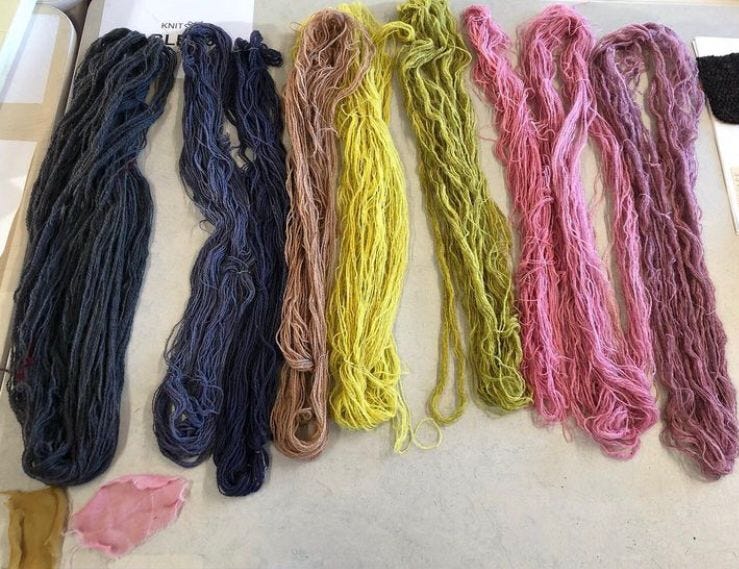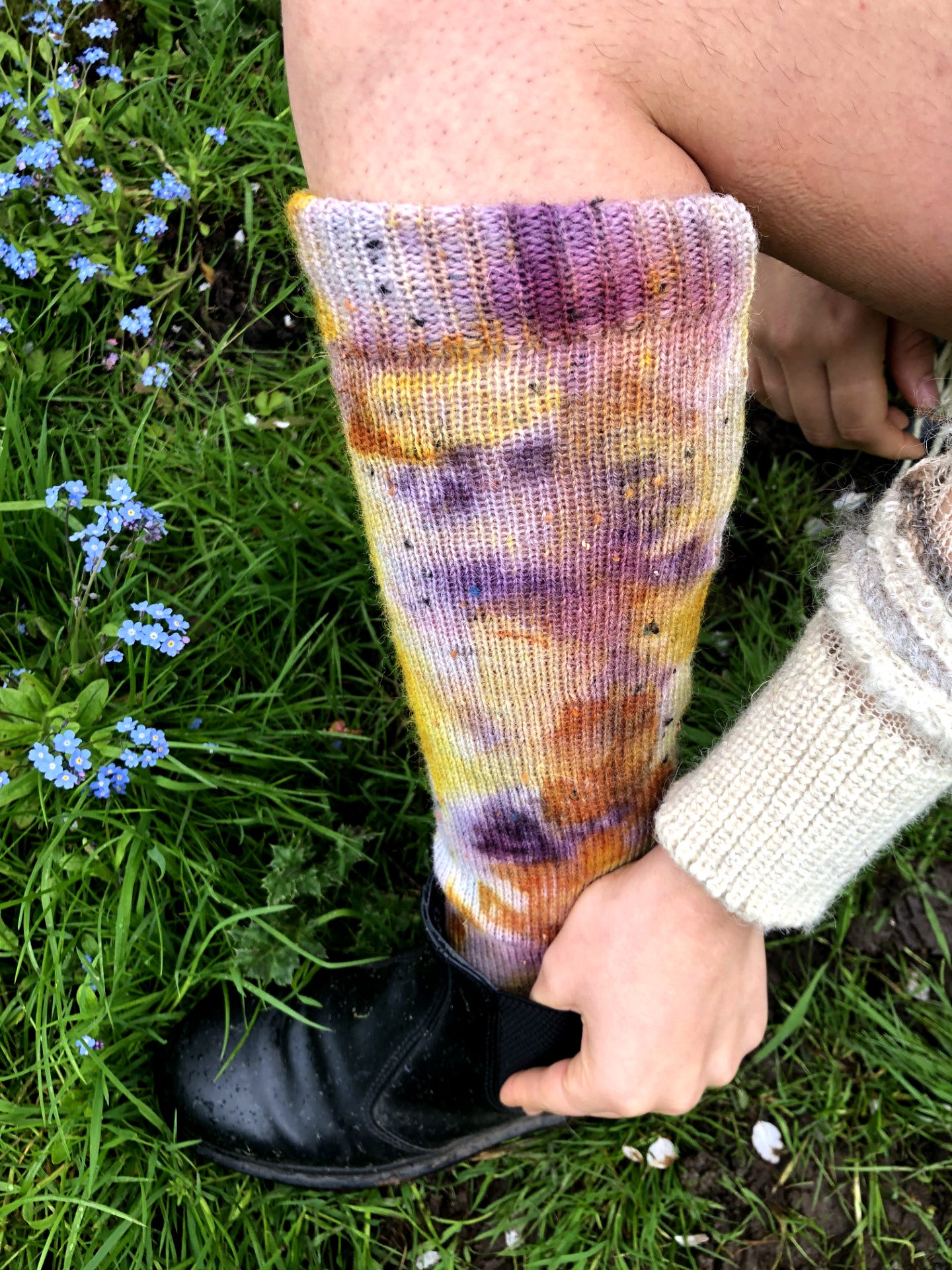Why natural dye gardens are crucial for regenerative fashion education
With a high number of chemicals & pesticides used in textile dyes, Sustainability Director Jackie Andrews-Udall and Designer Harriet Fletcher-Gilhuys discuss the importance of natural dyes

Jackie Andrews-Udall, Senior Lecturer / Professor Emeritus in Sustainable Textiles gives some background insights into textile dyes
Textile wet-processing is the most polluting phase within the fashion supply chain, with bleaching, surfactants, anti-bacterial and anti-microbial finishes as well as the synthetic dyes themselves, however this is often overlooked in the sustainable discourse despite the vast amount of benzene based chemicals, being utilised, with known mutagenic and carcinogenic effects on both aquatic and human life. Why this aspect of the value chain continues to be ignored or brushed aside seems due to the limited amount of qualified dye technicians left in the UK and the absence of training for specialist colourists in most textile design curriculum, as well as the continued profits made by the dominant dye companies such as Dystar, BASF…
REACH is the the main legislation regarding chemicals and most companies have signed up to Greenpeace’s detox programme ZDHC but there is no objective aggregated data in this field, defining a clear picture of the health risks and pollution levels of global waterways. Many forget that due to the fluid movement of the global water-cycle, dye contamination in un-regulated countries such as Bangladesh and Myanmar will eventually circulate. Also, no-one has fully considered in an era of net-zero pledges, what it means to replace the volume of fossil-fuel colourants we use when they dye 97% of our textiles
Designer Harriet Fletcher-Gilhuys examines the use of natural dyes
At the start of my undergraduate degree at Nottingham Trent University studying BA (Hons) Fashion Knitwear and Knitted Textiles Design, during a routine dye lab induction I quickly became aware that the only dyes we were being taught to use and work with were industrial reactive chemical dyes, most commonly used in industry as the quick fix solution for dyeing textiles.
After making a suggestion about whether we could use another alternative, this led me to question firstly why natural dyes were not being used or at least accessible in some form (whether that be in raw state or extract) for experimentation purposes, but also why these were not being taught as part of the curriculum as standard mandatory procedure.
There is a common misconception that natural dyes are not as colour fast or long lasting compared to industrial dyes, hence the lack of teaching or use within this area. However with the right support and teaching regarding recipes, fixatives and processes this can in fact be a suitable and far safer alternative. Not only would this reduce the amount of chemicals exposed to the skin from irritants and air exposure during the dyeing process, but this will encourage students to work at a slower pace, harvesting local resources and working towards a slow fashion approach.
Universities are placing a huge focus and pressure on sustainability learning outcomes within modules, and high expectations on students to meet these expectations. Clearly more needs to be implemented and facilitated at ground level within the institutions themselves to support development and engagement. If students are not taught about natural dyes, fibre sovereignty and heritage craft skills how can we build a localised truly sustainable fashion economy?
Together with an MA textile student, I developed a proposal for a natural dye garden at Nottingham Trent University to create a space for students to work directly with the land and better understand the soil. By gaining funding we were able to build and secure plots in order to get the garden facilitated from seed level with a five year progression plan.
Post-graduation, I developed a teaching booklet and resource for NTU students with a range of dye recipes and advice on how to work with the space from harvesting, mordanting and preparing the fibres for dyeing to help to aid continued learning.
Through reading many books, doing lots of dye testing and taking relevant internships over 5 years, I am now at a point where I feel confident with my results and the level of colour and light fastness achievable. Trial and error can be frustrating at times, and this highlights the wider issue that natural dye teaching needs to be facilitated within universities in order to support students and young designers entering the fashion industry, giving them the tools and expertise needed to navigate regenerative design frameworks. In turn this will allow the industry to re-assess and challenge current perceptions around dye fastness, fading expectations and our overall relationship with colour.
Fashion Roundtable’s CEO Tamara Cincik was interviewed for TheIndustry.fashion article on France’s Fast Fashion ban
With France voting to ban fast fashion, will other countries follow suit? Will the ban work? Tamara Cincik was interviewed by TheIndustry.fashion to give her thoughts
“However, while fast fashion is questionable because of fair wages, it is also an income generator for people in garment work. So you have to be very nuanced about that.
If you ban fast fashion outright, where do those workers go for work? You have to take a much more systemic approach which builds up secure work for garment workers and for those in the supply chain rather than just banning fast fashion, which could then lead to more people (particularly women and girls) being in poverty”
VIN + OMI: Royal Garden Waste To Fashion’s Future Exhbition
Eco innovations from the King’s gardens to VIN + OMI’s catwalks on display at Sandringham House in a pioneering exhibition.
A collection of 26 innovative garments and accessories, using plant waste taken from Royal Gardens including Highgrove and Sandringham will be brought together for the first time. Open to visitors from 23 March – 11 October





